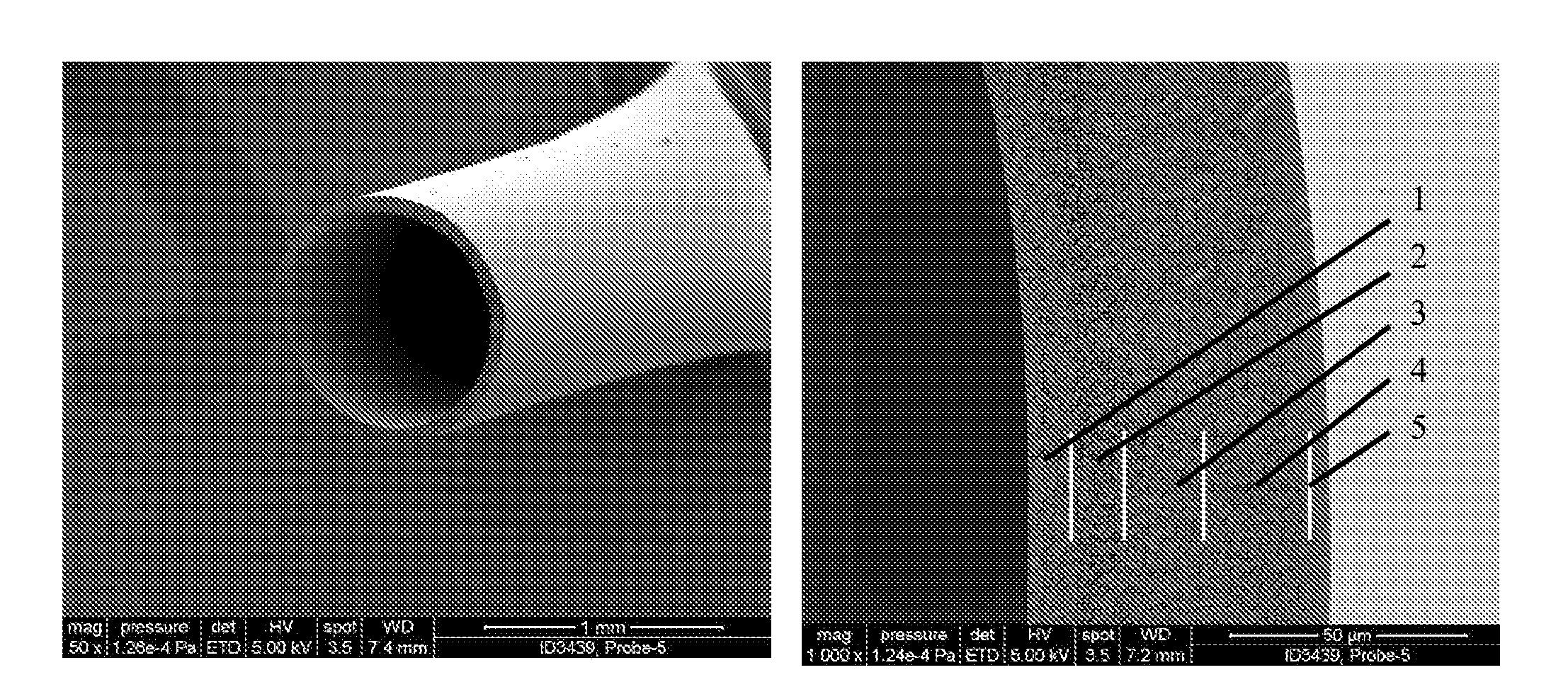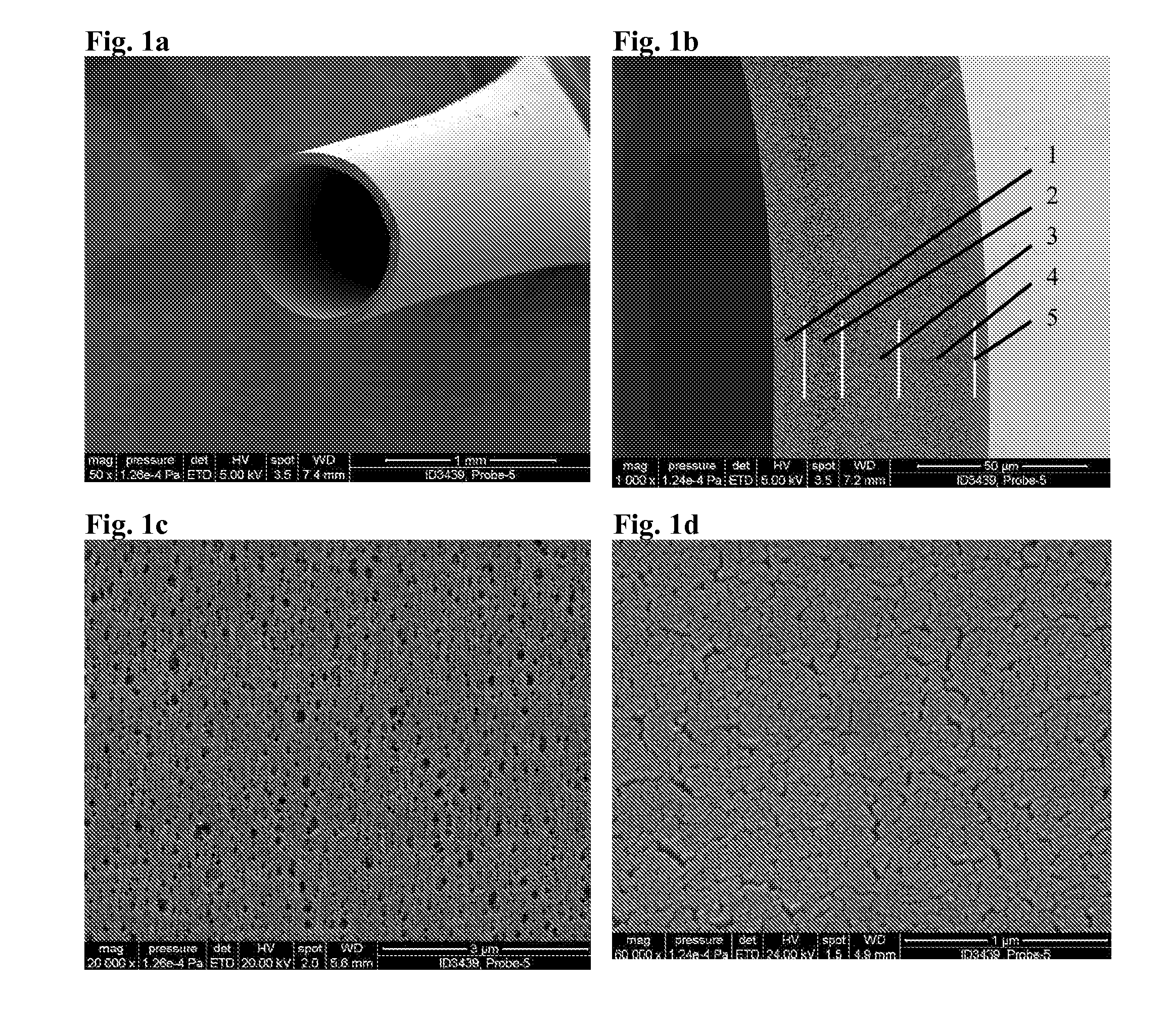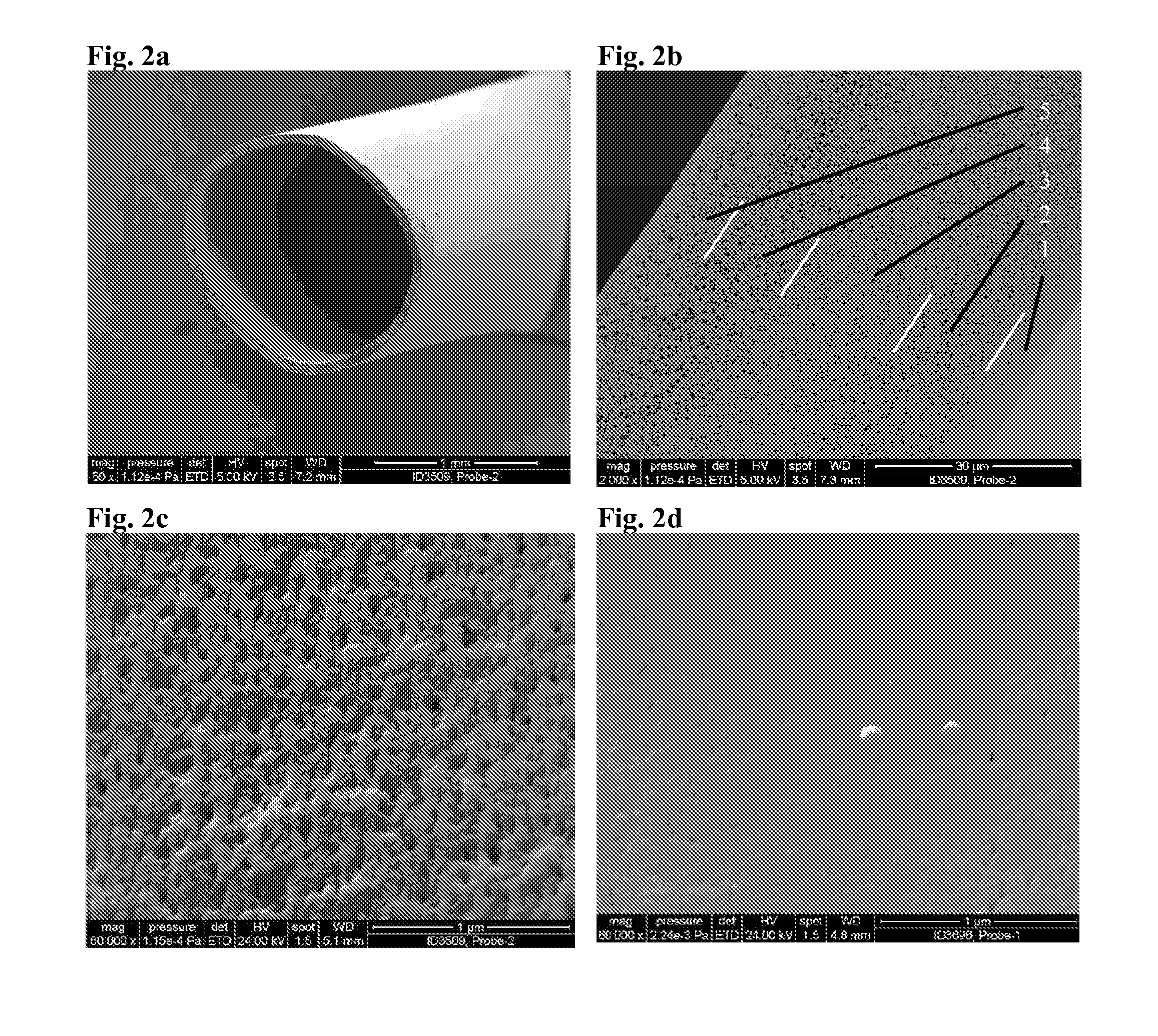Hollow Fiber Membrane and Method for Manufacturing Thereof
- Summary
- Abstract
- Description
- Claims
- Application Information
AI Technical Summary
Benefits of technology
Problems solved by technology
Method used
Image
Examples
example 1
[0110]A polymer solution is prepared by dissolving polyethersulphone (BASF Ultrason 6020) and polyvinylpyrrolidone (PVP) (BASF K30 and K85) in N-methylpyrrolidone (NMP). The weight fraction of the different components in the polymer spinning solution was: PES-PVP K85-PVP K30-NMP: 18-3,25-8-70,75. The viscosity of the polymer solution was 53560 mPa×s.
[0111]To prepare the solution NMP is first filled into a three neck-flask with finger-paddle agitator in the center neck. The PVP is added to the NMP and is stirred at 50° C. until a homogeneous clear solution is prepared. Finally, the polyethersulphone (PES) is added. The mixture is stirred at 50° C. until a clear high viscous solution is obtained. The warm solution is cooled down to 20° C. and degassed. To fully degas the solution, the highly viscous polymer solution is transferred into a stable stainless steel container. Thereafter the container is closed tightly and vacuum is applied to the container. The solution is degassed at 50 m...
example 2
[0115]The second example has been carried out with the identical composition of the polymer solution as in Example 1. The viscosity of the polymer solution was 60200 mPa×s.
[0116]The polymer preparation procedure was kept as described in Example 1. The membrane formation procedure was changed for the following points:
Temperature of the spinning nozzle:54°C.Spinning velocity:7.5m / minDistance between the spinning nozzle2.5cmand the precipitation bath:Temperature of the precipitation bath:27°C.
[0117]The remaining process steps are kept as in example 1. The wet hollow fiber membrane has an inner diameter of 1464 μm, an outer diameter of 1592 μm and a fully asymmetric membrane structure. The active separation layer of the membrane is at the outer wall surface. The active separation layer is defined as the layer with the smallest pores. The hydraulic permeability (Lp value) of the membrane is measured from inside to outside in a hand bundle, using the methods described earlier. The membran...
example 3
[0120]The third example has been carried out with the identical composition of the polymer solution as in Example 1. The viscosity of the polymer solution was 59300 mPa×s.
[0121]The polymer preparation procedure was kept as described in Example 1. The membrane formation procedure was changed for the following points:
Bore liquid (H2O:NMP)38 wt.-%:62 wt.-%Concentration of NMP in the precipitation bath:64wt.-%Distance between the spinning nozzle and3cmthe precipitation bath:Temperature of the precipitation bath:22°C.
[0122]The remaining process steps are kept as in Example 1. The only difference is that the fiber had different dimensions. The hollow fiber membrane has an inner diameter of 203 μm, an outer diameter of 281 μm and a fully asymmetric membrane structure. The active separation layer of the membrane is at the outer wall surface. The active separation layer is defined as the layer with the smallest pores. The hydraulic permeability (Lp value) of the membrane is measured from ins...
PUM
| Property | Measurement | Unit |
|---|---|---|
| Temperature | aaaaa | aaaaa |
| Temperature | aaaaa | aaaaa |
| Temperature | aaaaa | aaaaa |
Abstract
Description
Claims
Application Information
 Login to View More
Login to View More - R&D
- Intellectual Property
- Life Sciences
- Materials
- Tech Scout
- Unparalleled Data Quality
- Higher Quality Content
- 60% Fewer Hallucinations
Browse by: Latest US Patents, China's latest patents, Technical Efficacy Thesaurus, Application Domain, Technology Topic, Popular Technical Reports.
© 2025 PatSnap. All rights reserved.Legal|Privacy policy|Modern Slavery Act Transparency Statement|Sitemap|About US| Contact US: help@patsnap.com



